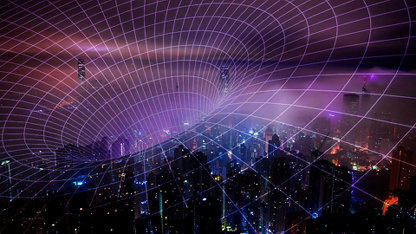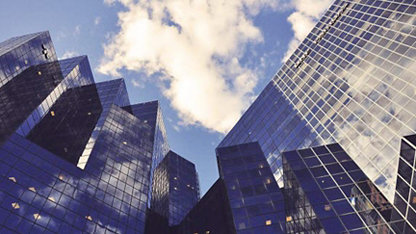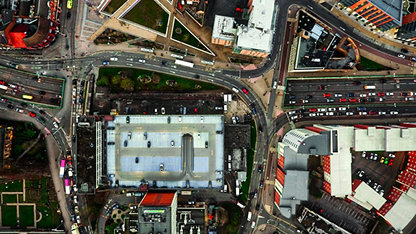To forecast how things could change in the future, we need to look at how city formation has changed in the past 150 to 200 years.
During the feudal and monarchic periods, cities were few and they were centres of power. The biggest cathedrals and temples were built there because this was where the accumulation of capital was highest. Cities were scattered; they weren’t necessarily physically linked in any unified way, other than by the movement of the armies. During the Industrial Revolution, that shifted: the concept of the city was much more as a centre for production and transaction. All of the big cities we have in the world today, from New York to Mumbai, are the result of this logic. The macro picture of urban patterns is changing all over the world.
The city as a place of transaction required the concentration of capital and therefore the concentration of human activity to manage that capital, such as banking systems and insurance agencies, and, in parallel, the research and development for industrial growth. Now, we’re undergoing a communication revolution, and we’re witnessing a collapsing of space and time; where someone can be sitting in the mountains and working on a project in any big city in the world. As a result, we are starting to see an atomisation of financial capital – and of human capital. This could be the next phase for cities this century.
“We are starting to see an atomisation of financial capital – and of human capital. This could be the next phase for cities this century. ”
The larger cities today are places of economic activity and transaction; of education and healthcare; of entertainment, spectacle and scale. There is a human longing for all of these things simultaneously. But this concentration of goods and services, which was required to form a large city on the terms of the Industrial Revolution, is not a requirement on the terms of the digital revolution. Size, up to a point, will not matter. Instead, we will see increasingly specialised cities, and what will matter will be the high-speed links – the physical and virtual infrastructure – connecting them.
The result will be a breakdown of the traditional hierarchy of cities as tier one, tier two or tier three according to size. Instead, we would see specialised cities functioning together as clusters that needn’t be organised in a traditional constellation format (whereby multiple cities form a broader economic unit) but could, because of the strength and speed of the connecting infrastructure, be far more dispersed. The kind of links between the cities – be they air, rail or road, for example – will also shape the nature of their specialisation. It could give rise to more creative city concepts than we have seen before.
Take Delhi today. You have a number of cities around Delhi that are severely interdependent, even to the point of their daily functioning. People live in one city and commute to another to work. In the future these links could be high-speed, or the need for physical commuting may dwindle, so they could be largely virtual. To an extent this new way of organising population growth is already anticipated in India: the Delhi-Mumbai Corridor emphasises all of those developments outside of the main cities and creates opportunities for new so-called smart cities to come up along that corridor.
At the institutional level, let’s take the example of a big city university. Will it continue to attract thousands of students into one location? Or will it spread out to other locations? You can already see universities opening up specialised centres in different cities, providing degrees in different countries. So the large city, which, for centuries, has been the repository of these integrational institutions, could go into redundancy. It is a possible scenario.
These are the larger patterns of change that I see unfolding over the next century and they will force us to confront the type of city that we want. And if it is the smart city, it will not be as it is currently defined, in terms of technology for transaction, for commerce and capital accumulation. That will not work in the long term, because we already know that every time your GDP goes up by one notch, the environment is going down by four notches.
The smart city of the future will have to be socially defined, that is: human wellbeing supported by technology, and not the other way around. India is already grappling with this contradiction, because in many places, if you introduce good governance, and if municipalities are able to use technology in order to deliver better services and goods to people, you already have a smart city.
It’s high time we developed a new planning paradigm and it cannot be based on more work, more growth, more wealth. If it is to have any central value, that value has to lead to social and environmental sustainability. Otherwise we have no future.














